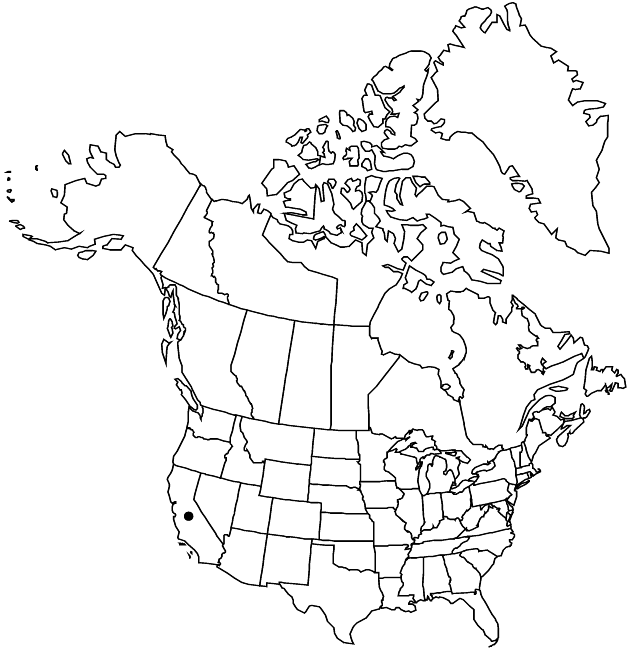Difference between revisions of "Erigeron blochmaniae"
Pittonia 3: 25. 1896.
FNA>Volume Importer |
imported>Volume Importer |
||
| (6 intermediate revisions by 2 users not shown) | |||
| Line 8: | Line 8: | ||
}} | }} | ||
|common_names=Blochman’s fleabane | |common_names=Blochman’s fleabane | ||
| + | |special_status={{Treatment/ID/Special_status | ||
| + | |code=E | ||
| + | |label=Endemic | ||
| + | }}{{Treatment/ID/Special_status | ||
| + | |code=C | ||
| + | |label=Conservation concern | ||
| + | }} | ||
|basionyms= | |basionyms= | ||
|synonyms={{Treatment/ID/Synonym | |synonyms={{Treatment/ID/Synonym | ||
|name=Erigeron foliosus var. blochmaniae | |name=Erigeron foliosus var. blochmaniae | ||
|authority=(Greene) H. M. Hall | |authority=(Greene) H. M. Hall | ||
| + | |rank=variety | ||
}} | }} | ||
|hierarchy=Asteraceae;Asteraceae tribe Astereae;Erigeron;Erigeron blochmaniae | |hierarchy=Asteraceae;Asteraceae tribe Astereae;Erigeron;Erigeron blochmaniae | ||
| Line 28: | Line 36: | ||
|distribution=Calif. | |distribution=Calif. | ||
|discussion=<p>Of conservation concern.</p><!-- | |discussion=<p>Of conservation concern.</p><!-- | ||
| − | --><p>Erigeron blochmaniae is recognized by its puberulous stems, relatively large heads, distinctive phyllaries, and glabrous cypselae.</p> | + | --><p><i>Erigeron blochmaniae</i> is recognized by its puberulous stems, relatively large heads, distinctive phyllaries, and glabrous cypselae.</p> |
|tables= | |tables= | ||
|references= | |references= | ||
| Line 37: | Line 45: | ||
-->{{#Taxon: | -->{{#Taxon: | ||
name=Erigeron blochmaniae | name=Erigeron blochmaniae | ||
| − | |||
|authority=Greene | |authority=Greene | ||
|rank=species | |rank=species | ||
| Line 51: | Line 58: | ||
|publication title=Pittonia | |publication title=Pittonia | ||
|publication year=1896 | |publication year=1896 | ||
| − | |special status= | + | |special status=Endemic;Conservation concern |
| − | |source xml=https:// | + | |source xml=https://bitbucket.org/aafc-mbb/fna-data-curation/src/2e0870ddd59836b60bcf96646a41e87ea5a5943a/coarse_grained_fna_xml/V19-20-21/V20_679.xml |
|tribe=Asteraceae tribe Astereae | |tribe=Asteraceae tribe Astereae | ||
|genus=Erigeron | |genus=Erigeron | ||
Latest revision as of 21:04, 5 November 2020
Perennials, 4–8 cm, taprooted, caudices woody, branches ascending, sometimes rhizomelike. Stems ascending-erect, densely and closely puberulous to villosulous (hairs stiffly crisped, minute), eglandular. Leaves cauline; blades linear to narrowly oblanceolate, 15–30 × 1–3 mm, usually even-sized, margins entire, densely and closely puberulous to villosulous, eglandular. Heads 1 or 2–5 in loosely corymbiform arrays. Involucres 4.5–6 × 9–14 mm. Phyllaries in 3–5 series (with broad, orange middle area and thick, white margins), densely canescent-hirsutulous (hairs crinkly), densely minutely glandular. Ray florets 45–72; corollas white to bluish, ca. 8–11 mm, laminae not coiling or reflexing. Disc corollas 4.6–5 mm (throats slightly indurate, not inflated). Cypselae 2.2–2.8 mm, 2-nerved, faces glabrous; pappi: outer of setae, inner of 21–36 bristles. 2n = 18.
Phenology: Flowering Jul–Oct.
Habitat: Sand dunes and hills
Elevation: 0–50 m
Discussion
Of conservation concern.
Erigeron blochmaniae is recognized by its puberulous stems, relatively large heads, distinctive phyllaries, and glabrous cypselae.
Selected References
None.
